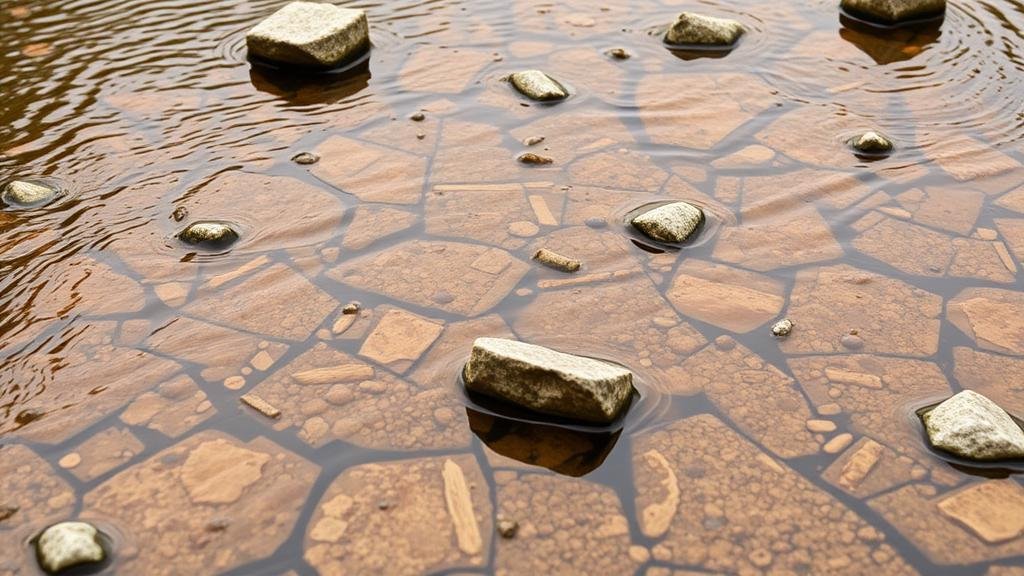Testing Sediments for Traces of Copper in River and Stream Deposits
Testing Sediments for Traces of Copper in River and Stream Deposits
Copper (Cu) is a vital element in various industries, but its presence in river and stream sediments poses significant environmental and health concerns. Monitoring copper levels is essential for understanding ecological impacts and potential contamination risks. This article outlines methodologies, techniques, and considerations for testing sediments for traces of copper in aquatic environments.
Importance of Monitoring Copper Levels
Copper is naturally occurring in the environment; however, anthropogenic activities such as mining, agriculture, and industrial processes can elevate its concentrations. Elevated levels of copper in aquatic sediments can adversely affect water quality, aquatic life, and, ultimately, human health. For example, according to the Environmental Protection Agency (EPA), the concentration threshold for aquatic life protection often hinges around 0.009 mg/L for copper in water, translating into sediments that may harbor significantly concentrated amounts due to adsorption and sedimentation processes.
Common Sources of Copper Contamination
- Agricultural runoff from fertilizers and pesticides
- Industrial discharges from mining and metal processing operations
- Urban runoff from roads and infrastructure
These sources can lead to significant cumulative impacts on river and stream sediments, necessitating regular monitoring to safeguard ecosystems.
Methodologies for Testing Sediments
Several established methodologies can be employed to detect and quantify copper in sediments. Appropriately collecting and analyzing sediment samples is critical for accurate results.
Sampling Techniques
Collecting sediment samples requires careful planning to ensure representativeness. Two common methods are:
- Grab Sampling: This method involves collecting sediment from the surface layer at various predetermined points to account for spatial variability.
- Core Sampling: Using a sediment corer allows for the extraction of vertical profiles of sediments, which is beneficial for understanding historical contaminant loads.
Laboratory Analysis
Once samples are collected, laboratory analysis is necessary to quantify copper content. Common methods include:
- Atomic Absorption Spectroscopy (AAS): This technique can detect trace concentrations of metals, including copper, in solid matrices.
- Inductively Coupled Plasma Mass Spectrometry (ICP-MS): This highly sensitive method is effective for identifying multiple trace elements simultaneously, allowing for a robust analysis of sediment samples.
Both methods have their advantages; AAS is typically cheaper and simpler, while ICP-MS offers greater sensitivity and the ability to analyze other elements concurrently.
Interpreting Results and Environmental Implications
Understanding and interpreting results from copper sediment tests involves contextualizing data within ecological benchmarks and regulatory standards. Elevated concentrations may indicate pollution sources or ecological risks. But, it is crucial to consider natural background levels of copper, which can vary by geographic region.
For example, in a study of the San Francisco Bay, sediment copper concentrations ranged from 0.6 to 80 mg/kg, reflecting both natural variability and human influences. As a result, continuous monitoring is essential for assessing trends over time and effectiveness of remediation efforts.
Conclusion and Actionable Takeaways
Testing sediments for traces of copper in river and stream deposits is essential for effective environmental management and public health protection. The primary considerations include understanding the sources of contamination, employing appropriate sampling and analytical methods, and interpreting data in context.
- Use routine monitoring programs in key waterways to track copper levels.
- Use both grab and core sampling techniques for comprehensive assessment.
- Adopt advanced analytical methods such as ICP-MS for high-resolution data.
By prioritizing sediment testing, we can better safeguard aquatic ecosystems, promote biodiversity, and ensure the sustainability of natural water resources.


